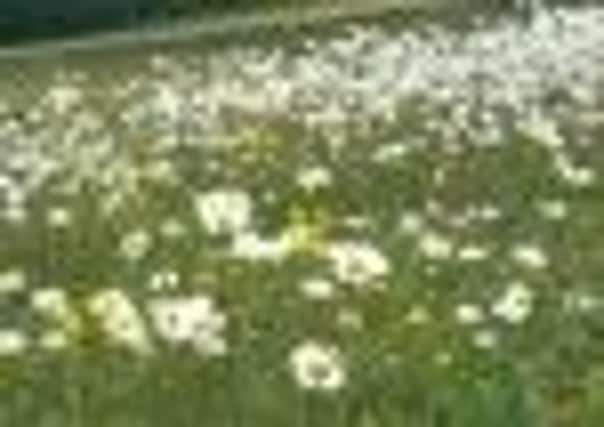Country and Coast: Celebrate Yorkshire’s magnificent meadows


From city centre derelict land to farmland meadows in the Dales or Wolds, the wild flowers have been blooming.
Maybe their vigour was a response to the harsh winter. One indicator of a meadow recovering from too much fertiliser or herbicide in the past is the common Meadow Buttercup.
Advertisement
Hide AdAdvertisement
Hide AdThen, over the years, other species appear as well. In 2011, the Ox-eye Daisies have been remarkable and in some areas, “swarms” of orchids have followed them.
Even along major roads into the urban areas, you can spot several species of wild orchids thriving.
On one roadside on the edge of the Pennines, the purple blooms have been present in their thousands.
National Trust meadows near Sheffield have been amazing this summer with dense stands of the yellow Hay Rattle, the tiny white parasite, Eye-bright, uncommon grass species, and the sward dotted with Common Spotted and Heath Spotted Orchids.
Advertisement
Hide AdAdvertisement
Hide AdA few weeks ago, the landscape was dominated by the white waves of the Ox-eye flowers blowing in the gentle breeze.
They were followed by Meadow Vetchling, Common Vetch, Tufted Vetch and Bush Vetch, and perhaps ten or more species of grasses, joining the yellows of Bird’s-foot Trefoil, a member of the pea family.
These are all the food plants of the butterflies. The dark Meadow Browns were especially noticeable but there has also been the Common Blue, a trefoil feeder, and the Skipper butterflies.
The ecology of the meadows runs its course through the seasons so enjoy it whilst you can.
Advertisement
Hide AdAdvertisement
Hide AdThis weekend you would be able to find a superb display at Rhs Harlow Carr just by the footpath leading from the main entrance up to the library.
The best way to appreciate your meadow is on a hot day, to lie down in the grassy sward and simply inhale the fragrance, listen to the buzzing insects, and just commune.
Along roadsides, railway lines, tracks and on waste ground it is as though a purplish flame has caught the vegetation. With streaks of vivid colouration, highlighted by evening sunshine, the time of the Rosebay is with us.
It is interesting to think, that in the 1800s, this was a rare species and that Yorkshire botanists would make a special excursion to view it.
* Professor Ian D. Rotherham is a researcher, writer and broadcaster on wildlife and environmental issues